In addition to identifying physical barriers, one of the purposes of the assessments was to examine how underlying policies combine with a lack of coordination across multiple departments or agencies to present barriers to safe walking and bicycling. This section discusses some of the non-infrastructure barriers, many of which are addressed through local, MPO, and State planning processes.
Though Section 217 of Title 23 of the United States Code requires that "bicyclists and pedestrians shall be given due consideration in the comprehensive transportation plans developed by each metropolitan planning organization and State," participants in many of the assessments discussed how planning processes and policies often do not adequately consider the needs of people on foot or bicycle, resulting in projects that are unsafe or that do not accommodate all users. Some assessments indicated that even when walking and bicycling are considered, this may come later in the process after key decisions have been made, leading to a feeling that the transportation agencies view pedestrian and bicycle facilities as an add-on or an afterthought, rather than as a key component of a complete project or complete transportation system.
One way to ensure that transportation projects properly account for walking and bicycling facilities is to integrate them fully into the transportation planning and design processes for every project. Some cities, MPOs, and State DOTs have adopted complete streets policies that focus on designing and operating the entire roadway right of way to enable safe access for all users, regardless of age, ability, or mode of transportation.
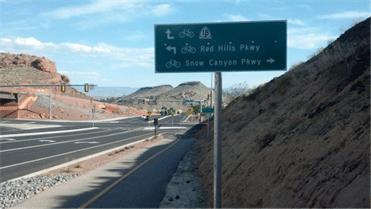
Complete streets policies range widely-from simple resolutions stating support of the concepts, to detailed laws, policies, and regulations discussing context, design, users, and exceptions. These policies can be particularly effective at institutionalizing the provision of pedestrian and bicycle transportation, incorporating it as a consideration into each stage of project development in all roadway activities. While these policies will not immediately address existing roadway deficiencies, they will establish the framework for approaching any new, upgraded, or rehabilitated facilities. Several assessments noted that communities were working on developing complete streets policies and would consider the assessment results in drafting their policy statements. However, the policies can only be effective if they are acted upon. Some assessments also noted that there was a State complete streets policy, but that the city or developers had not fully implemented it, and others had questions related to how the city would approach other site-specific issues.
Other assessments discussed the disconnect between stated policies or plans as drawn, and the way that projects are actually developed. In some cases a project may be designed to include pedestrian and bicycle facilities, but these are later removed due to complications or budgetary constraints. One way to prevent this from happening for Federally funded projects is to specify all project components in the National Environmental Policy Act (NEPA) documentation and in the TIP (Transportation Improvement Program) and STIP (Statewide Transportation Improvement Program).
Transportation agencies at all levels (local, MPO, and State DOT) may need to consider their approaches to planning and project implementation, including educating designers and stakeholders, and conducting reviews to ensure project commitments are carried out.
The FHWA Bicycle and Pedestrian Program website contains many resources regarding planning and project development, including references to legislation and regulation, the Statewide Pedestrian and Bicycle Planning Handbook and a forthcoming companion handbook focused on MPO pedestrian and bicycle planning. Other sample plan and sample policy resources for all levels of government are available on the Pedestrian and Bicycle Information Center website. The National Complete Streets Coalition, through Smart Growth America, has many resources related to complete streets policies and plans.
A fundamental requirement of transportation planning is public involvement, and there may be more interest in and support for walking and bicycling than planners, engineers, and local elected officials realize. Some assessments noted the value of strong voices supporting walking and bicycling so that elected officials will pay attention to and prioritize policies and investments to support walking and bicycling.
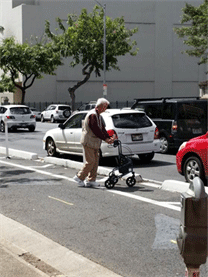
Many assessments noted that transportation agencies need to do a better job of engaging stakeholders throughout planning and project development to make sure that their needs are reflected. It is important to involve and include representatives of a wide range of vulnerable and traditionally underrepresented populations broadly in the transportation planning and project development processes, and also in preparing and participating in assessments. This may include people with disabilities, older people, younger people, environmental justice communities, and persons who are dependent on walking and biking. Nationwide, particularly in urban areas, pedestrian fatalities occur disproportionately in low-income areas. High-income areas have half as many pedestrian deaths as low income areas where people are more likely to rely on walking, bicycling, and transit to access jobs, school, retail, and health care. These neighborhoods are also less likely to have sidewalks and other pedestrian infrastructure.(5) It is important to consider these issues when identifying assessment locations and participants. In the Arizona assessment, a Spanish-speaking team member who participated in the field reviews was able to communicate with parents of students at the elementary school, transit riders, and patrons in the community market. He was able to relay a local perspective and information to the team that would not otherwise have been captured during the assessment. Other assessment teams noted the need for interpreters and materials in other languages.
In many cases, the assessments themselves proved to be an effective method of public engagement. Many assessments discussed the usefulness of bringing together people with a wide range of backgrounds, expertise, and perspectives. In particular, some assessments provided an opportunity for diverse stakeholders to discuss issues directly with a project engineer. In some cases, assessment participants suggested improvements that seemed quite logical, but with more detailed information on the site and the project, the project engineer was able to explain why they had been considered and rejected. In other cases the project engineers were able to gain a deeper understanding of the need for the facilities and how they are used, which could lead to changes in design as the projects progressed. Participants in assessments that focused on accessibility for people with disabilities and older adults expressed that it was useful to view the pedestrian and bicycle experience through those lenses.
For more information on involving the public in pedestrian and bicycling planning, see FHWA's A Resident's Guide for Creating Safer Communities for Walking and Biking and research funded by FTA regarding innovative ways to broaden the scope of public participation on issues related to Walking to Transit. The FHWA also has resources available to communicate with Spanish-speaking pedestrians and bicyclists.
Changing Community Context
Several assessments included discussion of changes in the community and how they related to provision of safe walking and bicycling facilities.
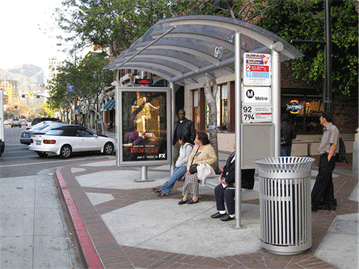
A key issue related to changing community context is the need to update expectations and requirements about how the roadway system functions, as communities transition from rural to suburban and urban, and as roadways transition from a focus on through traffic toward serving local businesses and residents. The Ohio assessment noted that many older arterials began as rural facilities, but have urbanized over time. With this change, there has been an increase in the number and type of users on the roads, such as residential, business/industry, and through-traffic. These arterials often do not have usable shoulders, sidewalks, or bicycle facilities because they were designed for a different context. Another assessment noted that there were no sidewalks in an area that the State DOT refers to as a "rural transition zone," but that the area is no longer rural. These examples highlight the need for communities and State DOTs to update their expectations for how their roadways should function and the types of facilities that should be present.
The FHWA is currently developing resources to address roadways undergoing this transition, through traffic calming and design flexibility, as well as examining conflicts at locations where multiple modes (e.g., walk, bike, car, truck, transit, etc.) all interact. These resources are expected to be available in early 2016 at the FHWA Bicycle and Pedestrian Program website. The FHWA published a Road Diet Information Guide to assist communities in making roads safer for non-motorized users through the reduction of traffic lanes on roadways. FHWA is developing a handbook for pedestrian and bicycle planning at the Metropolitan Planning Organization (MPO) level. The handbook will discuss how walking and bicycling fit into metropolitan planning activities and requirements; discuss the role of the MPO in regional pedestrian and bicycle planning and visioning; and provide examples and inspiration for how to continue to advance the state of the practice. The FHWA has resources available to assist with pedestrian and bicycle planning for State DOTs, and for better coordinating land use and transportation decisions at the local, MPO, and State levels.
Many of the assessments identified situations in which it was unclear who was responsible for providing and maintaining facilities to promote safe walking and bicycling. The responsible parties could be local government, the State DOT, transit agency, or even a private land owner. These accountability issues are particularly pronounced on corridors that serve as boundaries between one municipality and another, or on State owned roadways within municipal boundaries. Transit stop or station areas, and locations where it is unclear whether the municipality or the adjacent landowner must pay for and maintain sidewalks, are also subject to this uncertainty. Often, if the responsibility is unclear, no entity has stepped forward to ensure a safe facility or corridor for non-motorized travel.
In examining access to transit in particular, the assessments illuminated a need and an opportunity for transit agencies to take more decisive leadership in working with local government agencies to ensure safe and accessible walking and bicycling access to transit.
Several assessments noted an important role for MPOs in ensuring effective coordination, as they are involved in many of the planning and funding decisions in their regions, and convening municipalities, State DOTs, and transit agencies. MPOs often provide education and technical assistance to their member governments. Strong MPO leadership is critical to focusing on systemic approaches to get to safe, connected, and convenient walking and bicycling networks.
Another reason to pay close attention to coordination is that different professionals all looking at the same situation can draw different conclusions about the key problems, their root causes, and potential solutions. For example, the Maryland assessment report highlighted different ways of interpreting a problem - poor roadway design, poor signal timing, insufficient enforcement, poor transit stop placement - when examining a problem with drivers "blocking the box" or pedestrians crossing in the "wrong" place. This anecdote illustrates that there are many potential solutions, and that comprehensively addressing a problem may require more than one approach, including both engineering and non-engineering solutions.
In part, to address some of the issues of unclear responsibility, the Colorado assessment team selected a corridor serving as the border between two communities with a heavy transit presence. The assessment team found gaps in the sidewalk network, as well as inconsistent traffic enforcement along the corridor, due in part to questions of jurisdictional responsibility. The team found that the assessment event helped to encourage cross-agency collaboration, which is also likely to increase in the near future, as the communities each received $800,000 in Transportation Alternatives Program (TAP) funds from the MPO for the design and early implementation of some of the recommendations coming from the assessment, including portions of sidewalk in the corridor.
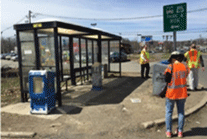
Local communities and State DOTs around the country face difficult decisions about how to fund and maintain their transportation systems in this era of limited resources. Many assessments noted insufficient funding as a barrier to making needed infrastructure investments to support safe walking and bicycling. In several assessments, local participants identified needed improvements, but noted that they felt limited in their ability to implement them, because they believed they did not have access to the "right" funding sources - in these cases referring to the Transportation Alternatives Program (TAP), which is a common, but very limited funding source for pedestrian and bicycle-related projects, or the Highway Safety Improvement Program (HSIP) funds.
One benefit of conducting assessments is that bringing together partners and stakeholders from many agencies and disciplines can also help to inform participants of additional funding opportunities and strategies. For example, in Wisconsin, the assessment provided an opportunity for local staff to discuss their vision of the area with U.S. DOT staff. During these discussions, they were able to learn about funding flexibility and potential opportunities to use Federal funds to remove a bridge and to retrofit an area of the riverfront to make it accessible. In the Utah assessment, U.S. DOT staff helped to educate participants about transportation funds available to Federal Lands agencies (the assessment included a portion of a national park), and about funding available through the Utah Transit Authority to encourage safe walking and bicycle access to transit.
While all transportation agencies seek to address many pressing needs with a limited budget, there is considerable flexibility in how communities can use Federal transportation funds. Two tables, developed by FHWA and FTA, show that existing surface transportation funding sources can be used for a range of pedestrian and bicycle plans, projects, and programs, and clarify eligible use of transit funding sources. The FHWA Bicycle and Pedestrian Funding, Design, and Environmental Review: Addressing Common Misconceptions document further clarifies the wide variety of Federal funding available to improve pedestrian and bicycle safety.
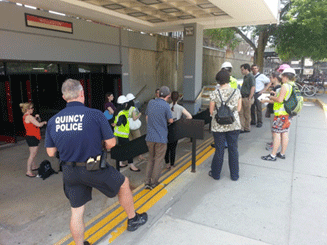
Some assessments noted that insufficient data exists to effectively identify and address walking and bicycling needs. Transportation agencies routinely collect traffic volume data for a variety of purposes, including analyzing travel patterns, identifying system deficiencies and needs, and studying potential project locations. Because the methods used for collecting motorized traffic volume data often do not work for counting pedestrians and bicycles, many agencies have an incomplete picture of the extent of the use of and demand for safe walking and bicycling facilities. For example, the Delaware assessment noted that it would be helpful to have good pedestrian count data to help build support for projects focused on improving pedestrian access and safety.
Many agencies conduct periodic manual counts of pedestrians and bicycles at key locations, and in recent years there have been many advances in automated counting technologies. The U.S. DOT has developed and supported a number of resources that transportation planning stakeholders can use to implement better data collection programs for non-motorized modes. These resources include the PBIC Planning & Data Collection Tools, the NCHRP Guidebook on Pedestrian and Bicycle Volume Data Collection, the FHWA Traffic Monitoring Guide (Chapter 4), and the NHTSA State Traffic Safety Information. In March 2015, FWHA announced Bicycle-Pedestrian Count Technology Pilot awards to 10 MPOs. The Pilot funds the purchase of a limited number of portable automatic counters to collect counts at various locations within the MPO planning areas. The program requires collecting counts over a period of one year using the portable counters as well as sharing data and experiences with FHWA. The results and lessons learned of the pilot will add valuable and practical insight to the existing resources.
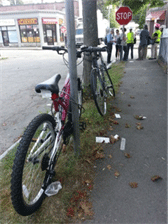
Many assessments noted a need for improved traffic enforcement and education about the rights and responsibilities of all roadway users. Enforcement issues observed during assessments included speeding traffic, cars parked in bike lanes or other areas designated for no parking, bicyclists riding in prohibited areas, and traffic signal violations by motorists, pedestrians, and bicyclists. Many assessments included participation from local law enforcement agencies, and participants appreciated the support of local law enforcement officials on addressing pedestrian and bicycle safety issues and the opportunity to share perspectives. Several assessments recommended more formal coordination between planners and engineers and law enforcement agencies to assist with education, enforcement, and collecting data on crashes.
While many communities would benefit from additional resources to support enforcement, the assessments also acknowledged that some of the recurring safety challenges may require infrastructure improvements to help guide users to the appropriate behaviors. In order to do this, some roadway users may need education on how to operate in and around pedestrian and bicycle facilities, in particular for newer designs, such as separated bike lanes, that may be less familiar. Several assessments indicated opportunities for signing and other education campaigns for new designs, as well as user education in high pedestrian volumes such as around schools and universities.

The NHTSA has many resources to support education and enforcement efforts, including the Pedestrian Safety Enforcement Operations: A How-To Guide, Countermeasures that Work: A Highway Safety Countermeasures Guide for State Highway Safety Offices-7th Edition (Chapters 8 & 9 address counter-measures associated with enforcement and education related to pedestrians and bicyclists). Also of value are the High Visibility Enforcement on Driver Compliance to Pedestrian Yield Right-of-Way Laws, and the Governor's Highway Safety Administration (GHSA) Everyone Walks, Understanding and Addressing Pedestrian Safety report. The NHTSA has also developed training courses on Pedestrian Safety for Law Enforcement and on Enhancing Bicycle Safety: Law Enforcement's Role.
4 United States Department of Transportation Policy Statement on Bicycle and Pedestrian Accommodation Regulations and Recommendations: https://www.fhwa.dot.gov/environment/bicycle_pedestrian/overview/policy_accom.cfm.
5 Kevin Gibbs et al., "Income Disparities in Street Features that Encourage Walking," Bridging the Gap (March 2012), http://www.rwjf.org/childhoodobesity/product.jsp?id=74085.